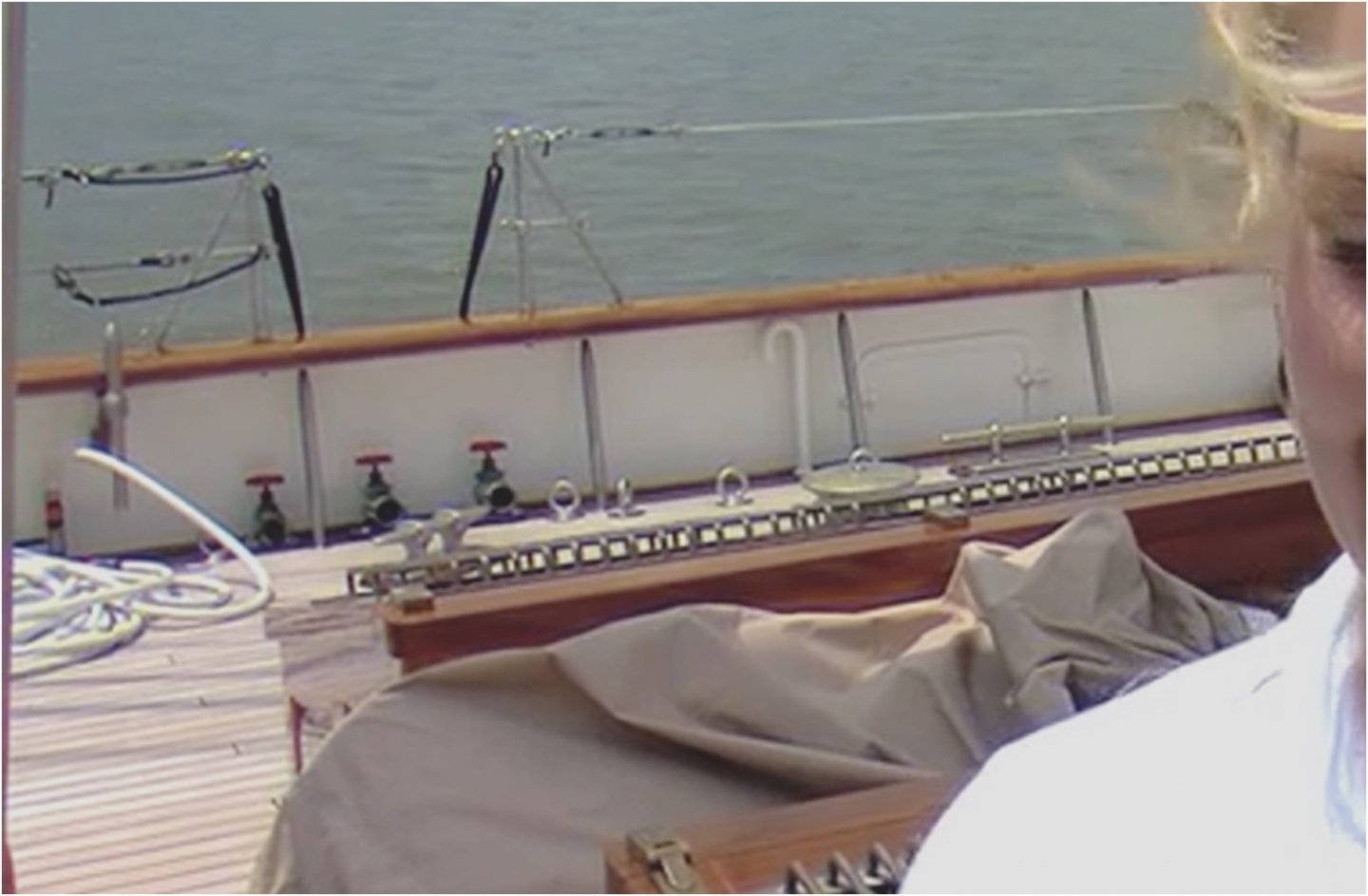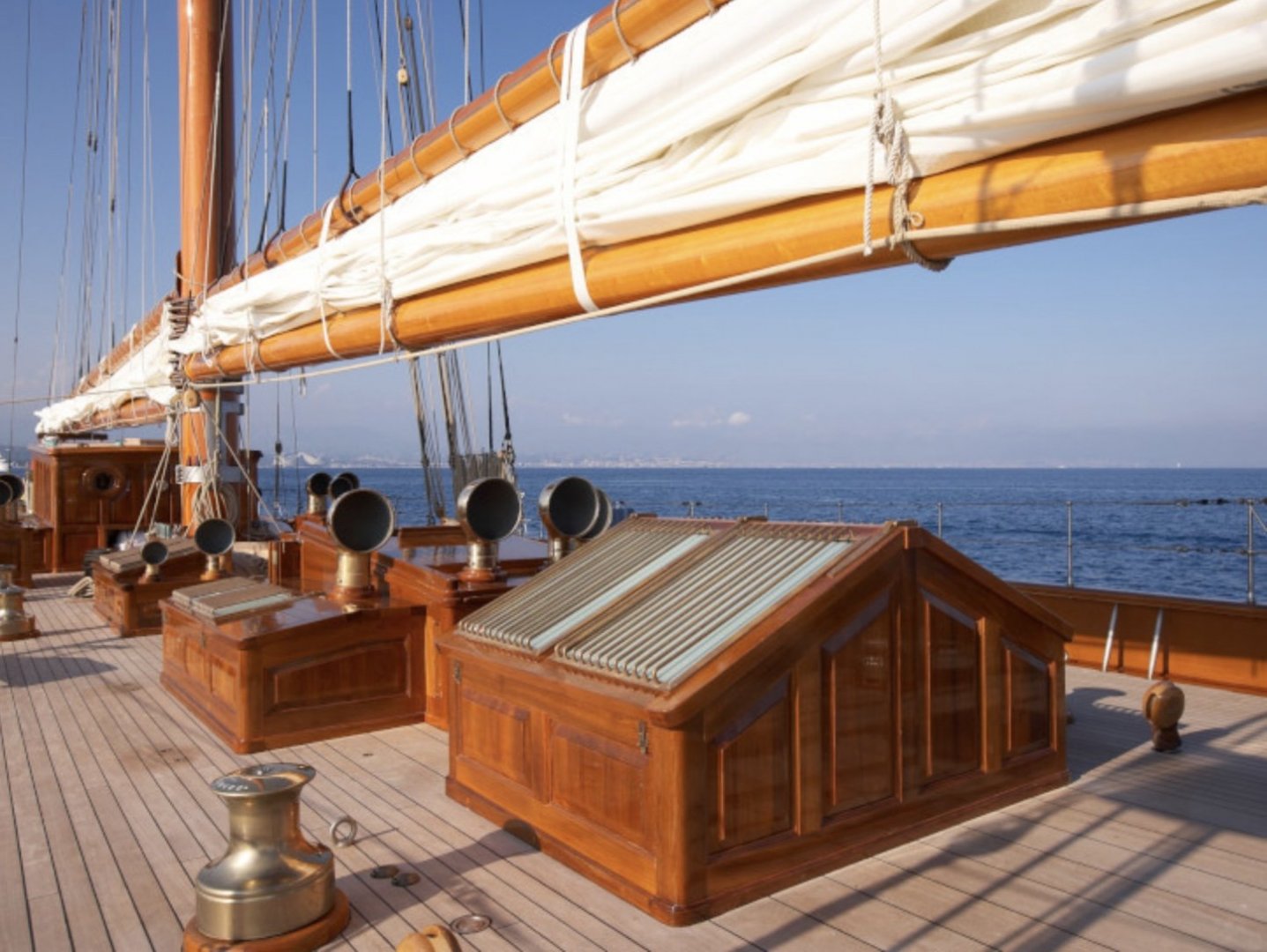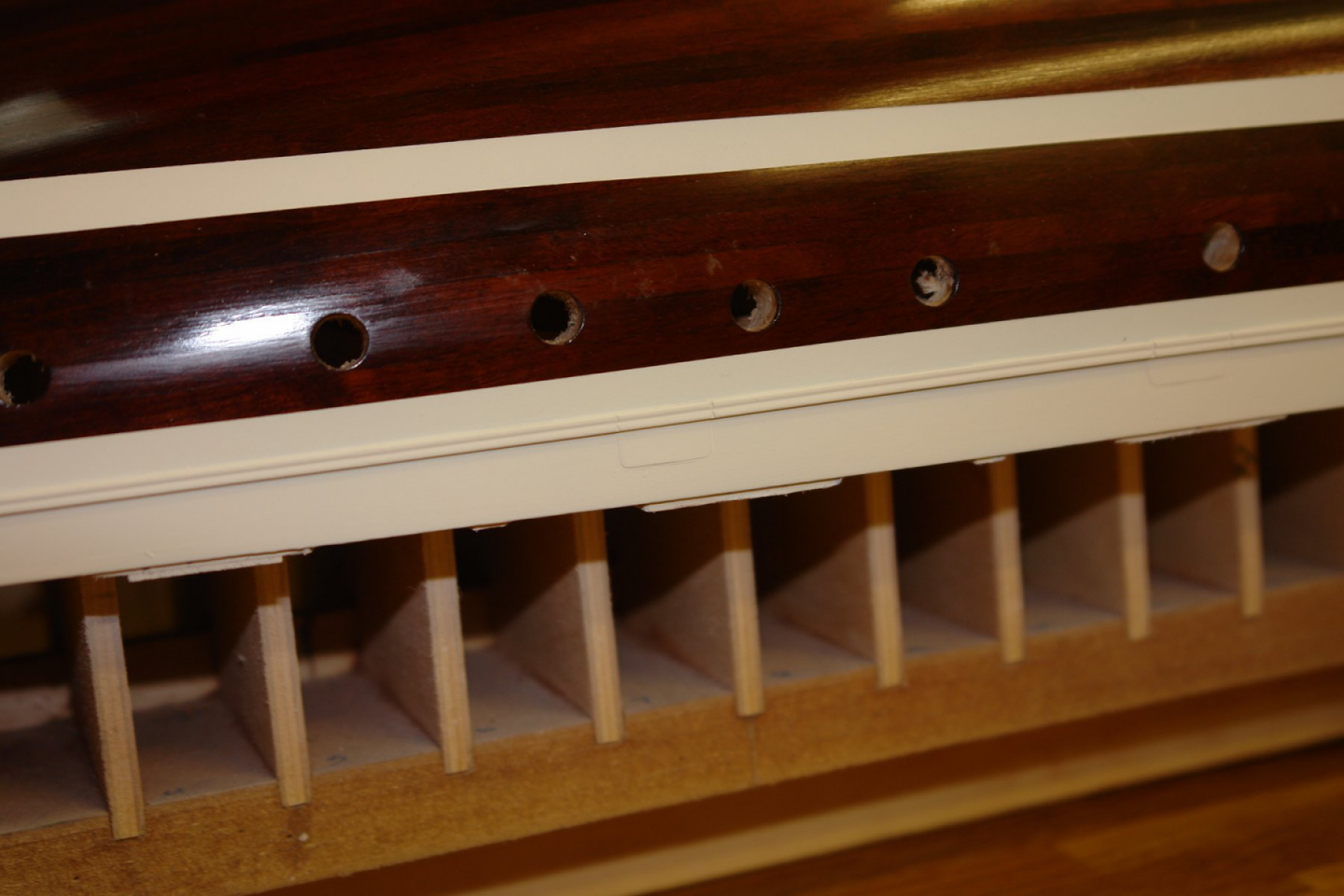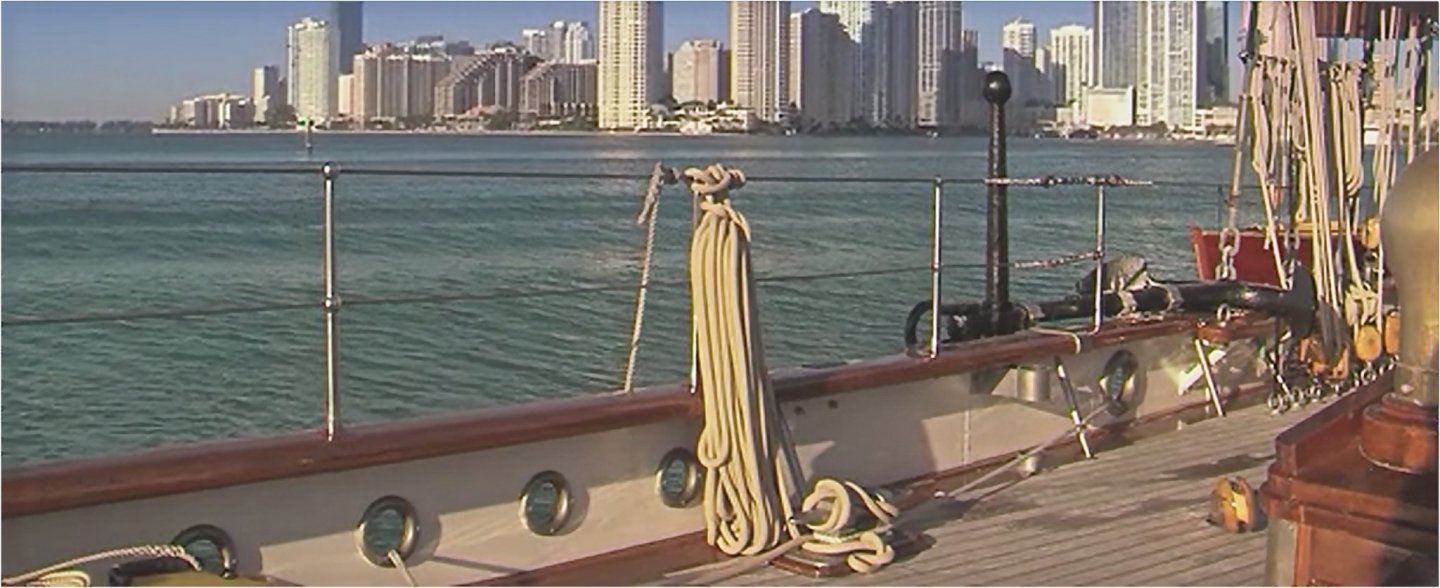-
Posts
3,926 -
Joined
-
Last visited
Content Type
Profiles
Forums
Gallery
Events
Everything posted by KeithAug
-
Thankyou Pat. You may remember that I had left a gap at the deck edge to be filled in later. Later arrived today. The deck edge detail has the deck plank to bulwark infill sitting proud of the deck. Having left a gap at the deck edge I had the opportunity of reproducing this feature. Specifically the final construction details will be as the attached sketch. The infill strips are nominally .080" square - sanded as required to give a snug fit to the bulwark. I should have explained earlier that I had previously painted the inside of the bulwark white. As built the bulwarks were painted brown. However sometime later they were painted white. I liked the white better so white it was. I also installed the hawse pipes. First marked and cut roughly to length. Then careful filed to just over length and installed with 2 part epoxy - before finally being emery papered flush with the deck. The deck cut outs turned out a little big but this will be hidden (hopefully) under the rubbing / reinforcing rings that sit around the pipe
-
Just to add my observations - and possibly confuse matters. When I bought my lathe and mill I first considered a combination machine. In the end I bought a separate mill and drill and ever since I have congratulated myself that I made the right decision. The problem is that in the normal course of machining a component I frequently find myself hopping between turning an milling operations - easily done when you have 2 machines but not that easy when you have to change over a combination machine from turning to milling operations and then back again. In my view the only reason to consider a combination machine is either lack of space or money. One of the fundamental aspects a competent machine should have is mass. With mass comes the strength to resist the forces that are created by the cutting operation. Mass and strength combine to reduce deflections and vibrations - improving machine accuracy and surface finish. In this respect steel (or even better cast iron) have significant advantages over aluminium. Youngs Modulus for steel and cast iron is far better than that for Aluminium and this means that deflections are proportionately lower for a given load. You can make small parts on a large machine but you can't make large parts on a small machine. Better to get a bigger machine than you think you need. I do hear a lot of misinformation about Chinese machines, particularly ones supplied by reputable home based distributors and manufactured under their own supervisory inspection regimes. Earlier today I was reading the 3 jaw chuck spec sheet for Sherline Chuck and it said:- Due to the nature of the design of a 3-jaw chuck, it cannot be expected to run perfectly true. Even 3-jaw chucks costing five times more than the one made for this lathe will have a 0.002" to 0.003" runout. If perfect accuracy is desired in a particular operation, the use of a 4-jaw chuck or a collet is recommended. Both are available for your Sherline Lathe.https://sherline.com/wp-content/uploads/2015/01/1040inst.pdf I couldn't actually find a quoted accuracy for the Sherline Chuck but the implication is that it is somewhat more than .002" to 003". The statement about chucks costing five times more prompted me to check my lathe chuck. I found that the runout eccentricity was just under .002" while the axial error was so small I couldn't measure it, and this from a 7 year old Chinese lathe. Chinese machines can be very good value for money.
-
More forward progress since the last post. The workshop was cold today and rain poured down all day. The sort of day it would have been better to stay in bed. I got fed up with drilling holes so got the paint can out. The rest of the deck holes can come along later. The deck has been given 4 coats of clear poly and in consequence has darkened up significantly. The next photo is taken mid way through the 1st coat. The next sequence shows the deck at the end of the 4th coat. More coats still required. I also had a go at the deck bosses for the bulwark reinforcing struts. 100 of these bosses are required - more on that topic in a later post. I decided it was time to mate the deck with the hull. The deck has to follow the convex shape of the frames while taking on a slightly concave shape fore and aft. I had checked the deck flexibility while planking so I was fairly sure it would bend without breaking or cracking. I also knew that I would need a lot of pressure to hold it in place while fixing. To apply the pressure at the deck edges I manufactured a set of hold down beams with spreaders at the deck edges The pressure was applied by many elastic bands. Liberally applied PVA glue was used to secure the deck.
-
Svein. A very interesting subject which I will be pleased to follow. Just one observation - With the balsa being soft and easily damaged are you sure that copper wont get damaged (badly dented) during the construction process.
-
Eberhard - could you use porthole eyebrows - 2 for each porthole. I bought these more than 30 years ago - and they do have rivets. 2 together Size Any good? - how many do you need?
-
I think we all agree that the problem is the degree of work hardening. As with all soft metals the issue is that the cutter has a tendency to push the metal out of the way rather than cutting it. I may just be fortunate to have a stock of brass square and rectangular bar which seems to cut well.
-
I'm with you Druxey - Eberhard is using fake matches - is all part of the fake news conspiracy.
-
Today I went off on a bit of a tangent. You may recall from earlier that I had simulated scuppers on the outside of the bulwarks. Photo below:- I needed to create the matching feature on the inside of the bulwark as per the next photo. The rim needs to be quite shallow - circa .007" thick. Plasticard seemed to be the sensible choice. I wanted all the rims to be identical so I contrived the following production method:- I started by cutting the plasticard into a series of oblongs. And these I stuck together using double sided sellotape. I then went to the milll and drilled the internal corners of the scupper before removing the centre with a 2mm end mill. I then cut the external profile on the table saw. I then shaped the external corners with fine sandpaper before soaking in terps to separate. I will simulate the hinges with thin plastic rod.
-
Valeriy, Nice brackets - I would have been inclined to machine them in a line along the edge of a piece of square bar - any reason why you chose to make them by milling the end of a piece of round bar?
-
Keith - the soft jaws on the vice plus only light clamping pressure preserved the shape. Druxey, Pat, Michael, Bedford - glad you liked it, sometimes the simple solutions take the most thought.
-
I'm still doing holes - this time various penetrations in the bulwarks. You may recall that I had predrilled the plywood backing to the bulwarks so all I needed to do was extend the penetration trough the mahogany planks. Mindful of the possibility of splintering I drilled small holes from the plywood (inboard) side and then opened the holes with a file from the outboard side. The tape on the outboard side is in preparation for painting the inner bulwarks white. The bulwark penetrations on Germania have reinforcing (anti chafing) rings around the edges. These rings look identical when viewed from both inboard and outboard. I scaled the rings (2 sizes) from a combination of plan detail and photographs and then had a root through my "bits stock" until I found some eyelets which were pretty much spot on. My plan was to remove much of the neck of the eyelets and inset the shortened rolled over ends from both sides of the bulwarks. The neck needed to be shortened by more than half - to a length of .050". I needed to do this accurately and also needed to clamp the eyelets while cutting. The following sketch shows the cutting jig / clamp I made. I cut the jig out of a piece of .5" x 1" bar. The webs are .050" thick one each for the smaller and larger eyelets. With the eyelets in place the jig is held in the vice clamping the eyelets and allowing them to be cut and filed to length. I test installed the eyelets which turned out both neat and realistic, the butt joint being virtually invisible. I now have all the eyelets cut awaiting installation later.
-
Pete - RYA Knots, Splices and Ropework Handbook (G63) - plenty usually available 2nd hand at reduced price.
-
Pete - I am sorry to have found your Bluenose build just as you abandoned it. As a fan of schooners I was just about to get excited. You were right to be concerned about the sailing characteristics of scale yachts. Simplistically displacement varies as a cube of length (volume) - while sail area varies as a square of length (area). This means as the scale is reduced the sails become proportionately too large in relation to the hull. When sailed this results in the boat lacking stiffness (easily knocked over by modest breezes). This is why extended keels with heavy bulbs are often fitted to scale versions of yachts. The problem however is that the extra weight can mean that the yacht sits lower in the water than might be desired. Scale working yachts are therefore somewhat of a compromise. If you are looking for a challenge Plans for the Schooner Altair can be bought and made up not either a static or RC working model.
-
John - thank you. Also thank you to everyone who has visited and liked. Phil - thank you for your very informative comments. It is difficult to know what they did on Germania but your explanation seems eminently sensible. Pat - I think we all learn from one another - MSW really is a special place isn't it.
-
Not sure about that Michael - I'm ok with straight lines but all those fancy curves are a bit too taxing. Thank you Druxey.
About us
Modelshipworld - Advancing Ship Modeling through Research
SSL Secured
Your security is important for us so this Website is SSL-Secured
NRG Mailing Address
Nautical Research Guild
237 South Lincoln Street
Westmont IL, 60559-1917
Model Ship World ® and the MSW logo are Registered Trademarks, and belong to the Nautical Research Guild (United States Patent and Trademark Office: No. 6,929,264 & No. 6,929,274, registered Dec. 20, 2022)
Helpful Links
About the NRG
If you enjoy building ship models that are historically accurate as well as beautiful, then The Nautical Research Guild (NRG) is just right for you.
The Guild is a non-profit educational organization whose mission is to “Advance Ship Modeling Through Research”. We provide support to our members in their efforts to raise the quality of their model ships.
The Nautical Research Guild has published our world-renowned quarterly magazine, The Nautical Research Journal, since 1955. The pages of the Journal are full of articles by accomplished ship modelers who show you how they create those exquisite details on their models, and by maritime historians who show you the correct details to build. The Journal is available in both print and digital editions. Go to the NRG web site (www.thenrg.org) to download a complimentary digital copy of the Journal. The NRG also publishes plan sets, books and compilations of back issues of the Journal and the former Ships in Scale and Model Ship Builder magazines.










